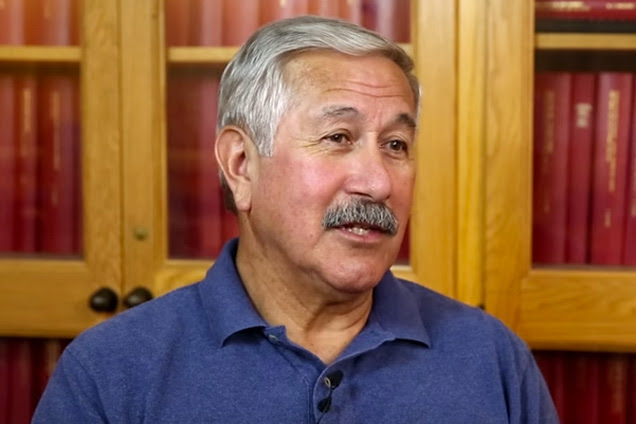"Hispanic Voters Are Poised to Have an Unprecedented Influence on the 2016 Election"
By Nancy Murphy

Stanford historian Albert Camarillo. Image credit: Worldview Stanford
Hispanics are the largest ethnic minority group in the United States, and their concerns will have a major impact on the 2016 election.
In order to understand the origins and current reality of US Hispanics,Worldview Stanford interviewed Stanford history Professor Emeritus Albert Camarillo, founding director of the university's Center for Comparative Studies in Race and Ethnicity and of the Center for Chicano Research. The excerpted conversation with Camarillo below is part of Wide Angle: Election 2016, a Stanford media series that offers scholarly, nonpartisan perspectives on the upcoming election.
This is a benchmark year for the Hispanic voting population. Between 2012 and 2016, you have 3.2 million more eligible US-born Hispanic voters. Add to that another 1.2 million people who've become citizens since the last general election. If you start doing the math, 3,000 more Hispanics are eligible to vote every day. It's a young population: 800,000-plus of native-born eligible voters every year in the last four years, in addition to the new immigrants that are naturalizing. It's unprecedented: more than 27 million eligible Hispanic voters. An estimated 13, maybe 14 million, will cast a vote, depending on their motivation. That's why people are saying that the Latino vote, especially in the critical battleground states where Hispanic voters constitute substantial voting blocks, will make a huge difference.
If you look at the most critical states people are talking about now, they would not have been on the map 20 years ago. Colorado, Arizona — no one would've thought that Arizona would be a state in play, but the demographics of the state and its eligible voters have shifted. Hispanics have contributed significantly to that. Florida — another hugely important battleground state.
If you look at the national polls that have sampled the Hispanic origin population by national origin group and Hispanics overall, three things have defined their interest: education — a no-brainer; jobs for what's basically a working-class and aspiring middle-class population; and immigration. Those are the defining issues for 2016.
Pages: 1 · 2
More Articles
- Board of Governors of the Federal Reserve System: Something’s Got to Give by Governor Christopher J. Waller
- February’s Hot Data Releases: Governor Christopher J. Waller, Federal Reserve Board Frames a Few of the Issues Around Inflation and the Economic Outlook
- Remarks by President Biden on American Rescue Plan Investments; September 02, 2022, South Court Auditorium Eisenhower Executive Office Building
- The US Housing and Mortgage Market, Risks and Resilience: Federal Reserve Governor Michelle W. Bowman
- Federal Reserve Chairman Jerome Powell: Monetary Policy in the Time of Covid
- Government of Canada Renews Investment in Largest Canadian Study on Aging
- Julia Sneden Wrote: A Look Back at Boomers and Welcome To the Other Side Of the Hill
- Stateline Nevada State Senator Pat Spearman and Birth Control Prescriptions: Women Gain Record Power in State Legislatures
- Kaiser Family Foundation (KFF), February 8th: This Early Stage of the COVID-19 Vaccine Roll-Out, Most Older Adults Have Not Yet Been Vaccinated As Supply Remains Limited
- How are States Prioritizing Who Will Get the COVID-19 Vaccine First? CDC’s Advisory Committee on Immunization Practices (ACIP) Released an Interim Recommendation For the Highest Priority Group






